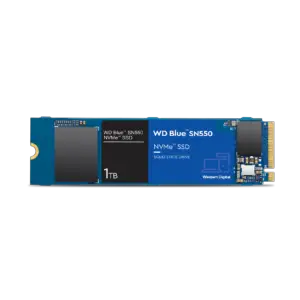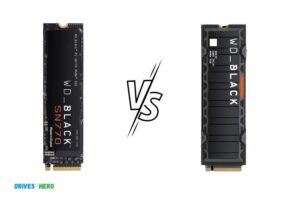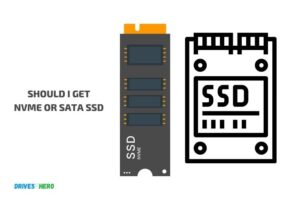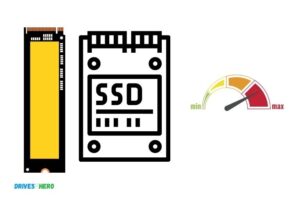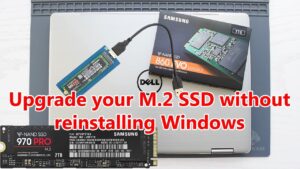Emmc Vs Nvme Ssd: Which has Better Performance?
Emmc (embedded MultiMediaCard) and NVMe (Non-Volatile Memory Express) SSD (Solid State Drive) are both types of storage devices.
However, NVMe SSDs outperform eMMCs in terms of speed, durability, and overall performance due to their advanced technology.
EMMC storage is commonly used in smartphones, tablets, and other low-cost devices.
It is a type of flash storage that is slower and less reliable than NVMe SSDs. On the other hand, NVMe SSDs are much faster and more reliable, making them ideal for high-performance laptops, desktops, and servers.
NVMe SSDs use the PCIe (Peripheral Component Interconnect Express) interface, which allows for faster data transfer speeds compared to eMMC storage.
While eMMC storage may be more affordable, its performance pales in comparison to NVMe SSDs. This makes NVMe SSDs the preferred choice for high-performance computing needs, despite their higher cost.
9 Feature Comparison: Emmc Vs Nvme SSD
| Feature | eMMC | NVMe SSD |
|---|---|---|
| Full Form | Embedded MultiMediaCard | Non-Volatile Memory Express Solid State Drive |
| Interface | MMC (MultiMediaCard) | PCIe (Peripheral Component Interconnect Express) |
| Speed | Slower (up to 400MB/s for eMMC 5.1) | Faster (up to 3500MB/s for read, 2100MB/s for write) |
| Usage | Used in smartphones, tablets, low-cost laptops | Used in high-end laptops, servers, and workstations |
| Storage Capacity | Up to 128GB or 256GB | Up to 2TB or more |
| Durability | Less durable | More durable |
| Cost | Cheaper | More expensive |
| Upgradability | Not user-upgradable | User-upgradable |
| Energy Efficiency | More energy efficient | Less energy efficient |
Key Takeaway
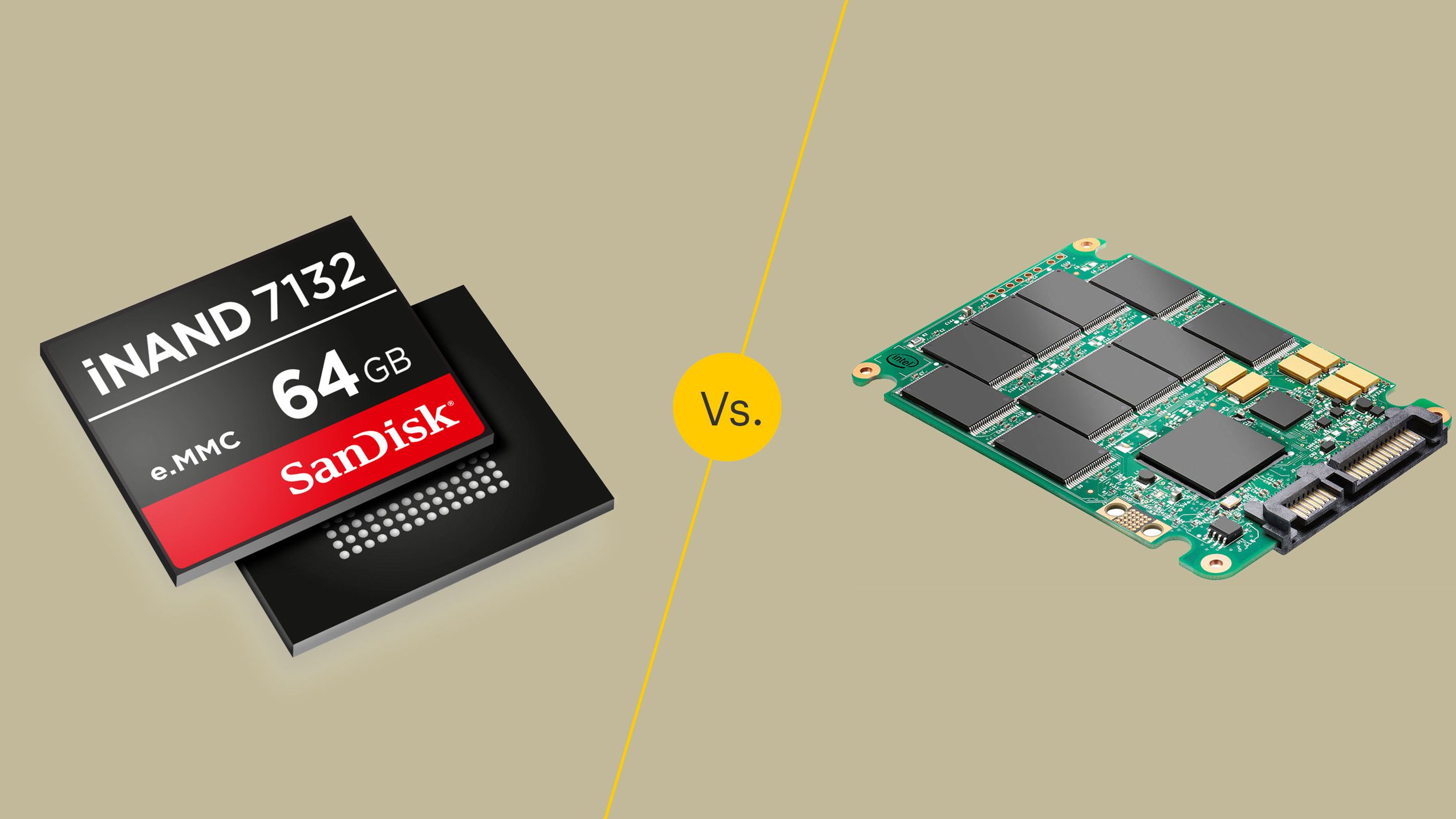
Five Facts About: Emmc Vs Nvme Ssd
Benefits Of Emmc Technology
EMMC technology offers various benefits compared to NVMe SSD. With its compact size and lower cost, eMMC is an ideal choice for budget-sensitive consumers who prioritize storage capacity over speed.
Additionally, eMMC provides reliable and stable performance for everyday computing tasks.
Emmc Vs Nvme Ssd:
EMMC (embedded MultiMediaCard) technology offers several advantages, making it a cost-effective and widely used storage solution in mobile devices.
Whether you are looking to meet small storage needs or require lightweight applications, eMMC technology has got you covered.
Let’s explore the benefits of using eMMC technology in more detail:
Cost-Effective And Widely Used In Mobile Devices:
- Low-cost solution: EMMC storage provides a cost-effective option, making it popular in budget-friendly mobile devices.
- Wide adoption: The versatility and affordability of eMMC have led to its widespread integration into various mobile devices like smartphones, tablets, and wearable gadgets.
Suitable For Small Storage Needs And Lightweight Applications:
- Compact size and lightweight: EMMC storage chips are compact, allowing them to fit seamlessly into slim mobile devices. Their lightweight nature contributes to the overall portability of these devices.
- Small storage capacity: With capacities ranging from a few gigabytes to 128GB, eMMC is ideal for users who have smaller storage requirements or primarily use cloud-based storage solutions.
Improved Performance Compared To Traditional Hard Drives:
- Faster access speeds: EMMC technology offers significant improvement in read and write speeds compared to traditional hard drives, resulting in faster app launch times and smoother multitasking.
- Enhanced responsiveness: The fast response time of eMMC storage ensures that your mobile device can handle demanding tasks seamlessly, providing a fluid user experience.
Limited Power Consumption For Longer Battery Life:
- Efficient power usage: EMMC chips consume significantly less power compared to traditional hard drives, thereby increasing the battery life of mobile devices.
- Prolonged battery longevity: With eMMC technology, your device can operate for longer durations without needing frequent charging, making it ideal for users constantly on the move.
EMMC technology offers cost-effective and flexible storage solutions for mobile devices. Its small form factor, improved performance, and power efficiency make it an excellent choice for users with smaller storage needs.
Whether you are looking to purchase a budget-friendly smartphone or a sleek wearable gadget, eMMC technology provides the performance and efficiency you require.
Limitations Of Emmc Technology
EMMC technology has certain limitations compared to NVMe SSD. While eMMC is cost-effective and compact, it tends to have slower speeds and limited capacity.
On the other hand, NVMe SSD offers faster performance and higher storage capacity for improved overall computing experience.
EMMC (embedded MultiMediaCard) technology is a type of solid-state storage commonly found in budget laptops, tablets, and smartphones.
While it offers some advantages, it also comes with several limitations compared to NVMe SSDs (Non-Volatile Memory Express Solid State Drives).
Let’s take a closer look at the drawbacks of eMMC technology:
Slower data transfer speeds compared to NVMe SSDs:
- EMMC technology typically has slower read and write speeds, making it less suitable for tasks that require faster data processing.
- Due to its slower performance, loading large files and running resource-intensive applications may take longer with eMMC storage.
Not suitable for heavy multitasking or resource-intensive tasks:
- EMMC storage is limited in its ability to handle multiple tasks simultaneously. It may struggle when running several applications or performing activities that require significant system resources.
- Users who frequently multitask, such as professionals working with complex software or gamers running demanding games, may find eMMC storage insufficient for their needs.
Limited storage capacity options:
- Compared to NVMe SSDs, eMMC storage typically has smaller storage capacity options. This limitation means users may need to compromise on the amount of data they can store on their devices.
- EMMC storage is commonly available in capacities ranging from 32GB to 128GB, which may not be sufficient for users who require vast amounts of storage for large media files or extensive software libraries.
While eMMC technology serves as a cost-effective solution for entry-level devices, it fails to deliver the performance and storage options demanded by power users and professionals.
Users seeking higher data transfer speeds, better multitasking capabilities, and larger storage capacity options may find NVMe SSDs to be a more suitable choice for their needs.
Advantages Of Nvme Ssds
NVMe SSDs offer significant advantages over eMMC, including faster data transfer speeds, improved overall system performance, and enhanced multitasking capabilities.
With NVMe, users can experience reduced latency and quicker access to files, making it the preferred choice for high-speed storage solutions.
High-Speed Data Transfer Rates For Enhanced Performance
- NVMe SSDs offer exceptionally high-speed data transfer rates, resulting in enhanced performance and responsiveness.
- These SSDs utilize the NVMe (Non-Volatile Memory Express) interface, which allows for faster communication between the storage drive and the computer.
- With NVMe SSDs, you can experience significantly faster boot times, quicker application loading, and seamless multitasking.
- The high-speed data transfer rates enable smoother gameplay and improved frame rates in gaming.
- NVMe SSDs are also ideal for video editing, as they significantly reduce rendering and exporting times.
Ideal For Demanding Tasks Such As Gaming, Video Editing, And Data-Intensive Applications
- NVMe SSDs are specifically designed to handle demanding tasks with ease.
- Gamers can benefit from the increased speed and responsiveness, resulting in reduced load times and smooth gameplay.
- Video editors will appreciate the quick file transfers and accelerated rendering times, allowing for more efficient editing workflows.
- Data-intensive applications, such as data analysis or virtual machines, can fully utilize the high-speed capabilities of NVMe SSDs, ensuring faster data access and processing.
- The enhanced performance of NVMe SSDs boosts productivity and efficiency for professionals in various fields.
Wide Range Of Storage Capacity Options Available
- NVMe SSDs come in a wide range of storage capacity options, catering to different needs and budgets.
- Whether you require a compact drive with lower capacity for everyday computing or a massive storage solution for storing large files, NVMe SSDs have you covered.
- These drives offer capacities ranging from 120GB to several terabytes, providing ample space to store operating systems, software, files, and media.
- The availability of various capacity options allows you to choose the perfect NVMe SSD that meets your specific storage requirements without compromising on performance.
Efficient Power Management And Low Latency
- NVMe SSDs are known for their efficient power management capabilities, resulting in lower power consumption.
- Their advanced power management features help extend battery life in laptops and improve overall energy efficiency.
- Additionally, NVMe SSDs boast low latency, meaning the drive can quickly respond to read and write requests, minimizing any lag or delay.
- This low latency not only enhances performance but also ensures a smooth and responsive user experience.
With efficient power management and low latency, NVMe SSDs offer the best of both worlds:
Improved performance and reduced power consumption.
Future-Proof Technology For Long-Term Use
- Investing in NVMe SSDs allows you to future-proof your storage solution for the long term.
- As technology advances, NVMe SSDs continue to evolve, providing even faster speeds and higher capacities.
- These drives are designed to keep up with the ever-increasing demands of modern computing and storage needs.
- By opting for NVMe SSDs, you can ensure that your system remains compatible with future technologies and advancements in storage.
- With their long-term viability and superior performance, NVMe SSDs offer a reliable and efficient solution for all your storage requirements.
Comparison Of Emmc And Nvme Ssds In Performance
EMMC and NVMe SSDs offer different levels of performance. NVMe SSDs provide faster speeds and better overall performance compared to eMMC.
Nvme Ssds Offer Significantly Faster Sequential Read And Write Speeds
- NVMe SSDs (Non-Volatile Memory Express Solid-State Drives) come with impressive performance capabilities, particularly in terms of sequential read and write speeds.
- Sequential read speed refers to the ability to retrieve data in a continuous stream, while sequential write speed refers to the ability to write data in a continuous flow.
- Compared to eMMC (embedded MultiMediaCard) technology, NVMe SSDs provide significantly higher speeds, making them ideal for high-performance computing tasks.
Emmc Technology Excels In Random Read And Write Operations
- While eMMC technology may not match NVMe SSDs in terms of sequential read and write speeds, it holds its own in random read and write operations.
- Random read and write operations involve accessing data stored in different locations on the storage device.
- EMMC technology is designed to efficiently handle random read and write tasks, making it suitable for everyday computing needs such as web browsing, media playback, and document processing.
Factors Affecting Real-World Performance Of Emmc And Nvme Ssds
Several factors influence the real-world performance of eMMC and NVMe SSDs, beyond their inherent technical capabilities.
Some of these factors include:
- Controller quality: The quality of the SSD’s controller, which manages data transfers between the storage medium and the system, can significantly impact performance.
- Interface speed: The speed at which the SSD connects to the computer’s motherboard, such as SATA, PCIe, or UFS, influences the overall data transfer rate.
- NAND flash technology: The type of NAND flash memory used in the SSD affects performance. Higher-quality, faster NAND flash chips enhance overall speed.
- Operating system and software optimization: The efficiency of the operating system and software in utilizing the SSD’s capabilities can impact its performance.
- It’s important to consider these factors when evaluating the real-world performance of eMMC and NVMe SSDs. Choosing components that align with your specific requirements can optimize your computing experience.
Remember, when it comes to performance, NVMe SSDs shine with their faster sequential read and write speeds. On the other hand, eMMC technology stands out in random read and write operations.
Understanding the factors that affect real-world performance can help you make an informed decision when selecting the right SSD for your needs.
Considerations For Choosing The Right Storage Solution
Choosing the right storage solution involves considering the differences between eMMC and NVMe SSD. Consider factors like speed, capacity, and cost to make an informed decision for your storage needs.
There Is A Trade-Off Between Performance And Cost
SSD storage solutions, such as eMMC and NVMe, offer varying levels of performance and cost. It’s important to consider the trade-off between these factors when choosing the right storage solution for your needs.
EMMC (embedded MultiMediaCard) SSDs are commonly found in budget-friendly devices and offer decent performance at a lower cost. They are suitable for basic tasks like web browsing, document editing, and light gaming.
In contrast, NVMe (Non-Volatile Memory Express) SSDs provide a significant boost in performance, especially in terms of data transfer speed.
They are commonly used in high-end gaming PCs, workstations, and professional applications where speed is crucial.
Consider your budget and the level of performance required for your specific use cases to determine which storage solution strikes the right balance for you.
Hardware Requirements And Compatibility
- When selecting a storage solution, it is vital to consider the hardware requirements and compatibility. Not all devices are compatible with both eMMC and NVMe SSDs.
- EMMC SSDs are commonly used in smartphones, tablets, and entry-level laptops due to their compact form factor. Ensure that your device supports eMMC storage before considering this option.
- On the other hand, NVMe SSDs require specific hardware support, such as a compatible motherboard and an available M.2 slot. Check the specifications of your system to verify its compatibility with NVMe before making a purchase.
- Remember to also consider the power requirements of the chosen storage solution and ensure your system can provide sufficient power to drive the SSD.
Specific Needs And Usage Scenarios
Different storage solutions cater to specific needs and usage scenarios based on their performance characteristics.
If you primarily use your device for everyday tasks like web browsing, document editing, and media consumption, eMMC SSDs are a cost-effective choice that can handle these activities with ease.
However, if you require faster data access, heavy multitasking, or demanding applications like video editing, gaming or virtual reality
NVMe SSD would provide a significant performance advantage, reducing loading times and improving overall responsiveness.
Consider how you will be using your device and prioritize the features that align with your specific needs.
Future Upgrade Possibilities
- When choosing a storage solution, it is prudent to consider future upgrade possibilities based on your needs and budget.
- EMMC storage is typically soldered onto the motherboard and cannot be upgraded or replaced. This limits your ability to expand storage capacity in the future.
- On the other hand, NVMe SSDs are easily replaceable and offer the option to upgrade to higher capacities as technology advances. This flexibility ensures that you can adapt your storage to meet future requirements.
- Additionally, NVMe SSDs offer backward compatibility, allowing you to use them in systems that support older generation SSDs, providing better compatibility and an extended lifespan for your storage investment.
Consider the trade-off between performance and cost, evaluate hardware requirements and compatibility, assess specific needs and usage scenarios, and consider future upgrade possibilities when deciding between eMMC and NVMe SSDs.
Remember that the right storage solution ultimately depends on your specific requirements and budget, ensuring an optimal computing experience.
FAQ About Emmc Vs Nvme Ssd
What is the difference between EMMC and NVMe SSD?
The main difference between EMMC and NVMe SSDs is the type of connection they use.
EMMC drives use a serial connection or a parallel connection, while NVMe SSDs use the PCIe bus to communicate with the host device.
Additionally, NVMe SSDs offer faster read and write speeds, more efficient power consumption, and larger storage capacity.
What are the advantages of EMMC storage?
EMMC storage has several advantages over other types of storage. It offers a low-cost solution with excellent performance for embedded applications. It is also space-efficient, thanks to its small form factor.
Additionally, EMMC storage is highly reliable and can withstand extreme temperatures and other environmental conditions.
What are the advantages of NVMe SSDs?
NVMe SSDs offer faster read and write speeds than other types of storage, as well as higher storage capacities.
They also offer more efficient power consumption, which can help reduce costs and improve battery life. Additionally, NVMe SSDs are highly reliable and provide superior data security.
What are the advantages of using an NVMe SSD over an EMMC?
The main advantages of using an NVMe SSD over an EMMC are higher speed and larger capacity.
NVMe SSDs offer much faster read and write speeds than EMMC storage, as well as larger capacities.
This makes them ideal for applications that require high performance and large amounts of data storage.
Conclusion
The debate between eMMC and NVMe SSDs is an important one for anyone seeking to optimize their storage performance.
NVMe SSDs clearly have the edge when it comes to speed and latency, making them an excellent choice for power users and those involved in heavy data-intensive tasks.
On the other hand, eMMC SSDs offer a more affordable option for casual users and those with less demanding storage needs.
Ultimately, the choice between eMMC and NVMe SSDs will come down to individual needs and budget constraints. It’s important to consider factors such as speed, reliability, and cost when making a decision.
Regardless of which option you choose, it’s clear that both eMMC and NVMe SSDs have their own unique advantages and can greatly improve overall system performance.
So, take the time to assess your requirements and make an informed decision that best matches your needs.


